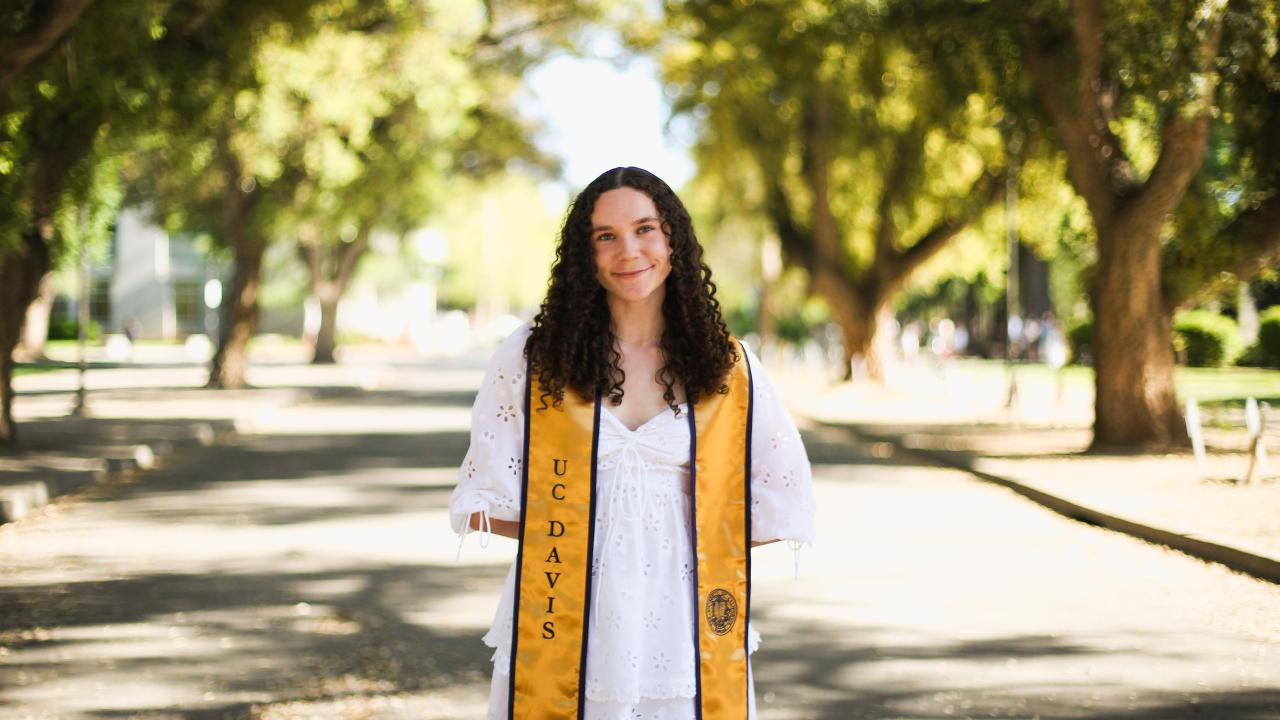
In the Wild: Kayla Morgan Hickey with Green Schoolyards America
Quick Summary
- Over the summer, Morgan worked as a Graduate Student Researcher with Green Schoolyards America focused on identifying barriers and opportunities for establishing schoolyard forests in Nevada.
My name is Kayla Morgan Hickey and I graduate in June 2024 from the accelerated 12-month track of the Environmental Policy and Management program. I previously attended UC Davis, receiving a B.S. in Environmental Science and Management in June 2023 with a minor in Sustainability in the Built Environment. I have a broad interest in sustainability which I have pursued throughout my education in various roles with focuses on energy, waste, and procurement. I am currently a local government management fellow within the City Manager’s Office in my hometown, the City of Bakersfield. In my future career, I hope to continue to work in government to create positive environmental change for the communities I serve.
This past summer, I had the opportunity to complete my practicum with Green Schoolyards America. Green Schoolyards America inspires and supports systems change to transform asphalt-covered school grounds into living schoolyards that improve children’s well-being, learning, and play, while strengthening their communities' ecological health and climate resilience. Having access to tree cover can prevent heat-related illness, reduce stress, promote physical activity despite heat, and reduce air pollution (Green Schoolyards America). As a Graduate Student Researcher, focusing on assessing barriers and opportunities for establishing schoolyard forests in Nevada, I have been able to conduct interviews with Nevada school districts, non-profit organizations, and agencies to gather information on the current landscape of tree planting in the state. Although the data hasn’t been finalized for tree cover percentage in Nevada, the work completed in California revealed that 2.5 million students have less than 5% of shade on their campuses, while the standard to promote health is at least 30% (Green Schoolyards America). I predict that Nevada will have similar results in minimal shade coverage for schoolyards, but potentially even less due to Nevada’s climate. Having spoken to school and district representatives, the need for trees on their campuses can be described as dire.
The data collected from interviews will be used to create the conditions in which schools and districts in Nevada can successfully plan, implement, and steward “schoolyard forests”– groves of trees on school campuses designed to benefit students during the school day. The project addresses the negative impacts of extreme heat due to climate change on children; the lack of tree canopy in disadvantaged communities; and the need for regional, collaborative approaches to planning and sustaining urban forests. My contribution has aided in identifying key stakeholders, developing partnerships, identifying and targeting schools with the highest need, and analyzing barriers and opportunities to bring schoolyard forests to scale.
Having a part in such foundational climate resilience work while working alongside the wonderful Green Schoolyards America staff has been one of the highlights of my experience in EPM. I am excited to see the results of Green Schoolyards America’s work in Nevada and beyond.
